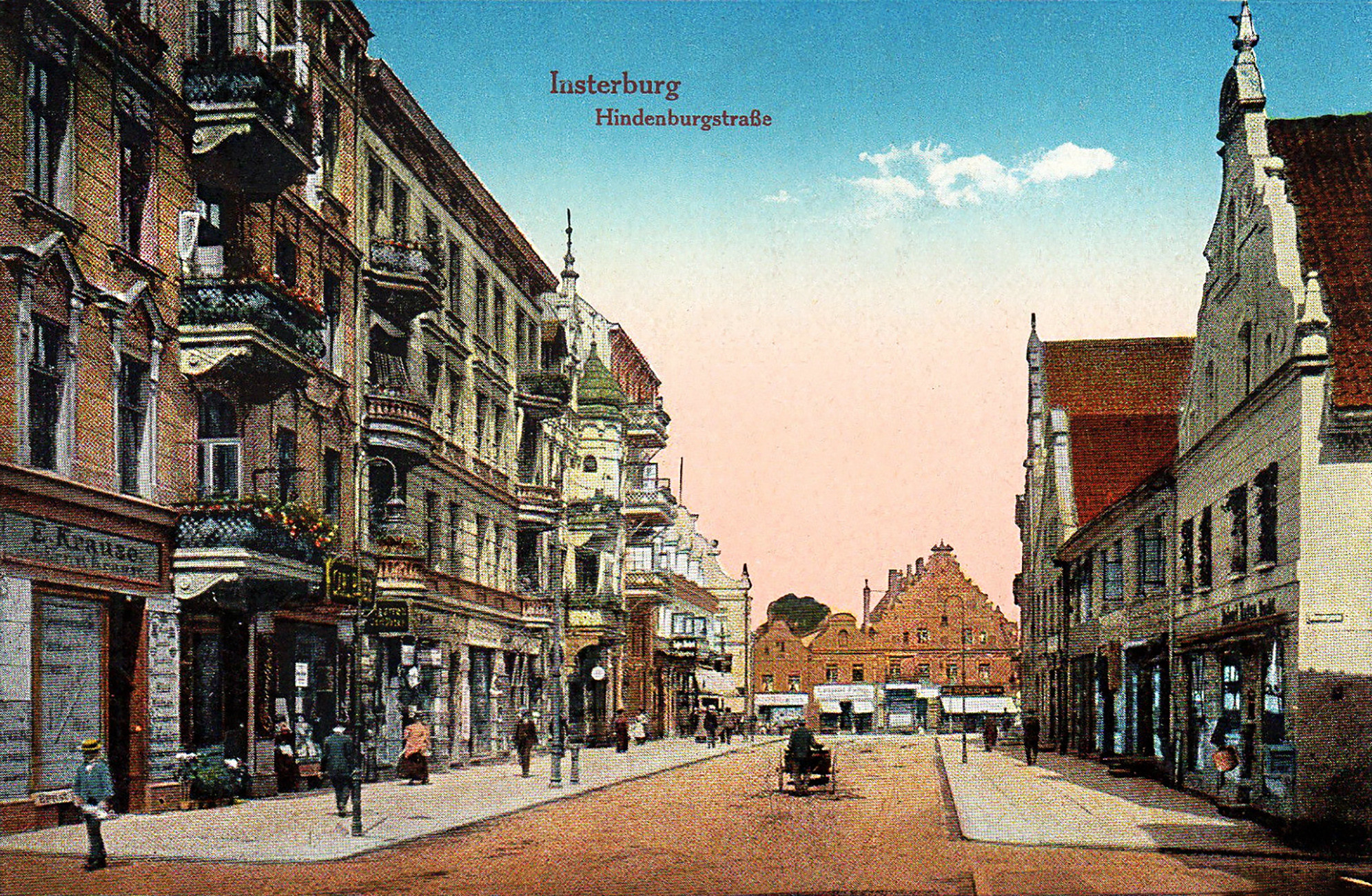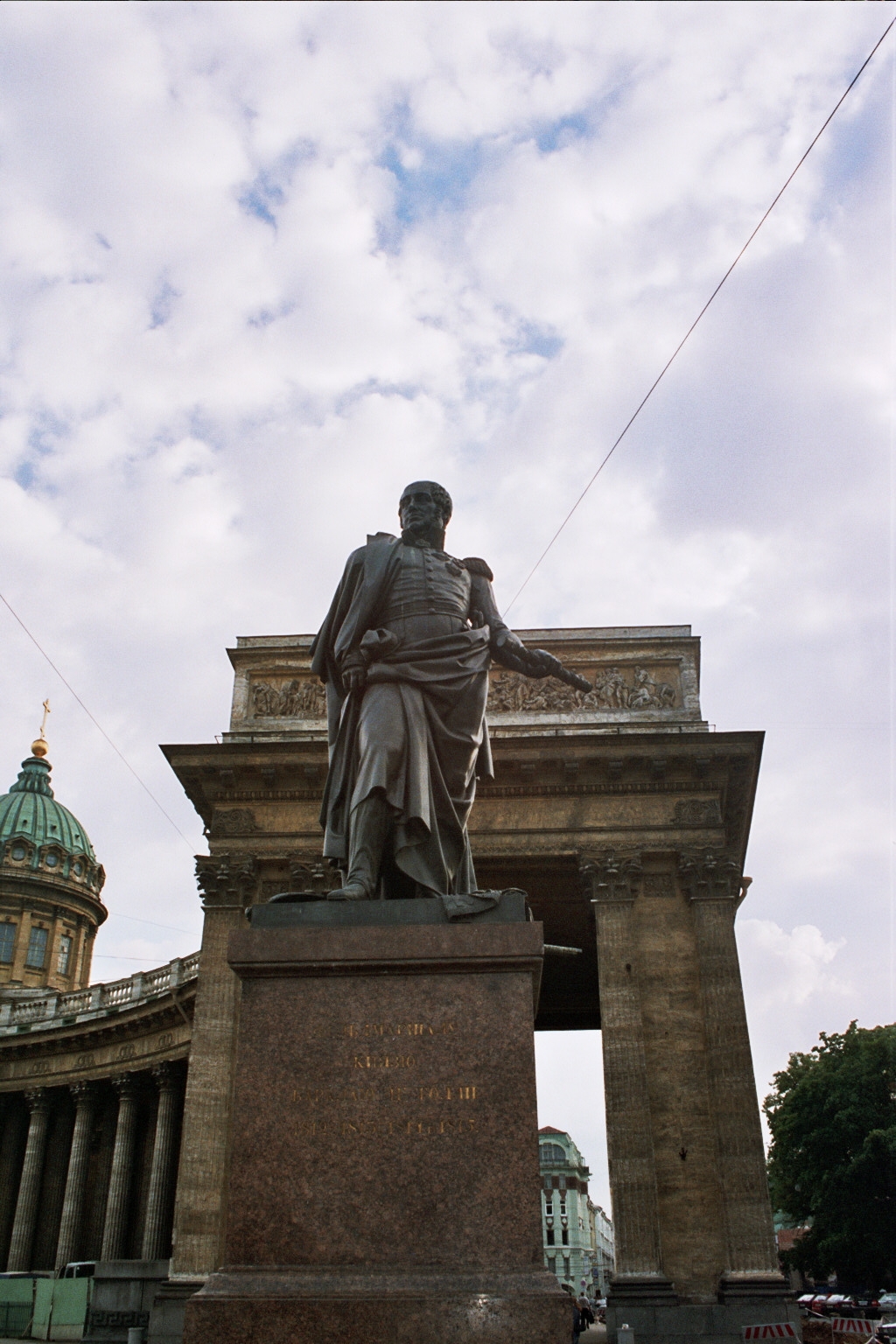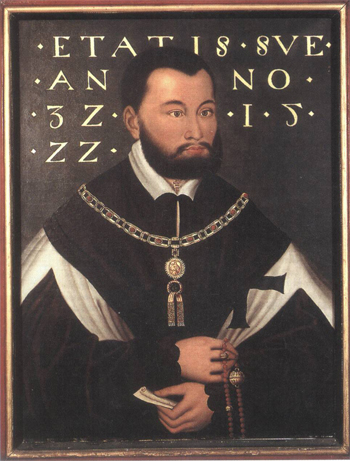|
Chernyakhovsk
Chernyakhovsk (russian: Черняхо́вск) – known prior to 1946 by its German name of (Old Prussian: Instrāpils, lt, Įsrutis; pl, Wystruć) – is a town in the Kaliningrad Oblast of Russia, where it is the administrative center of Chernyakhovsky District. Located at the confluence of the Instruch and Angrapa rivers, which unite to become the Pregolya river below Chernyakhovsk, the town had a population in 2017 of 36,423. History Chernyakhovsk was founded in 1336 by the Teutonic Knights on the site of a former Old Prussian fortification when Dietrich von Altenburg, the Grand Master of the Teutonic Knights, built a castle called ''Insterburg'' following the Prussian Crusade. During the Teutonic Knights' Northern Crusades campaign against the Grand Duchy of Lithuania, the town was devastated in 1376. The castle had been rebuilt as the seat of a Procurator and a settlement also named ''Insterburg'' grew up to serve it. In 1454, Polish King Casimir IV Jagiellon incorpo ... [...More Info...] [...Related Items...] OR: [Wikipedia] [Google] [Baidu] |
Chernyakhovsky District
Chernyakhovsky District (russian: Черняховский райо́н) is an administrative district ( raion), one of the fifteen in Kaliningrad Oblast, Russia.Law #463 As a municipal division, it is incorporated as Chernyakhovsky Municipal District.Law #262 It is located in the center of the oblast. The area of the district is . Its administrative center is the town of Chernyakhovsk.Resolution #639 Population: 57,521 ( 2002 Census); In 1989, Chernyakhovsk was administratively incorporated separately from the district, so the 1989 Census data do not include its population. The population of Chernyakhovsk accounts for 77.9% of the district's total population. Transportation The main railway line from Kaliningrad to Moscow passes through the district; there are two more railway lines from Chernyakhovsk to Zheleznodorozhny and from Chernyakhovsk to Sovetsk Sovetsk (russian: Сове́тск) is the name of several urban localities in Russia. * Sovetsk, Kaliningrad Oblast, ... [...More Info...] [...Related Items...] OR: [Wikipedia] [Google] [Baidu] |
Michael Andreas Barclay De Tolly
Prince Michael Andreas Barclay de Tolly (german: Fürst Michael Andreas Barclay de Tolly; baptised – ) was an Imperial Russian soldier of Baltic German and Scottish origin, who was commander-in-chief and Minister of War of the Russian Empire during Napoleon's invasion in 1812 and the War of the Sixth Coalition. Barclay implemented a number of reforms during this time that improved supply system in the army, doubled the number of army troops, and implemented new combat training principles. He was also the Governor-General of Finland. He was born into a German-speaking noble family from Livonia, who were of Scottish descent. His father was the first of his family to be accepted into the Russian nobility. Barclay joined the Imperial Russian Army at a young age in 1776. He served with distinction in the Russo-Turkish War (1787–92), the Russo-Swedish War (1788–90), and the Kościuszko Uprising (1794). In 1806, Barclay began commanding in the Napoleonic Wars, distinguishin ... [...More Info...] [...Related Items...] OR: [Wikipedia] [Google] [Baidu] |
Kaliningrad Oblast
Kaliningrad Oblast (russian: Калинингра́дская о́бласть, translit=Kaliningradskaya oblast') is the westernmost federal subject of Russia. It is a semi-exclave situated on the Baltic Sea. The largest city and administrative centre of the province ( oblast) is the city of Kaliningrad, formerly known as Königsberg. The port city of Baltiysk is Russia's only port on the Baltic Sea that remains ice-free in winter. Kaliningrad Oblast had a population of roughly 1 million in the Russian Census of 2010. The oblast is bordered by Poland to the south, Lithuania to the north and east and the Baltic Sea to the north-west. The territory was formerly the northern part of the Prussian province of East Prussia; the remaining southern part of the province is today part of the Warmian-Masurian Voivodeship in Poland. With the defeat of Nazi Germany in World War II, the territory was annexed to the Russian SFSR by the Soviet Union. Following the p ... [...More Info...] [...Related Items...] OR: [Wikipedia] [Google] [Baidu] |
Angrapa
The Angrapa (, , , ) is a river that begins in northeastern Poland and ends in the Kaliningrad Oblast of Russia. Originating in Lake Mamry, it joins the 101-km-long Instruch at a point near Chernyakhovsk – variously assessed as lying 140, 169, or 172 km from its source – to form the Pregolya. Its largest tributaries are the 89-km-long Gołdapa, which joins just before the border, and the Pissa (98 km). The name Angrapa is derived from the Old Prussian words ''anguris'' (eel) and ''apis'' (river). The towns of Węgorzewo, Ozyorsk and Chernyakhovsk as well as the village of Mayakovskoye, are situated along the course of the Angrapa. References See also * Rivers of Poland * Rivers of Russia Russia can be divided into a European and an Asian part. The dividing line is generally considered to be the Ural Mountains. The European part is drained into the Arctic Ocean, Baltic Sea, Black Sea, and Caspian Sea. The Asian part is drained in ... * List of rivers of Europe ... [...More Info...] [...Related Items...] OR: [Wikipedia] [Google] [Baidu] |
Instruch
The Instruch (russian: Инструч; german: Inster; lt, Įsrutis, Įsra; pl, Wystruć) is a river in Russia's Kaliningrad Oblast. It begins northeast of Dobrovolsk and, along with the river Angrapa, forms the Pregolya near Chernyakhovsk. Prior to 1945, the river was part of German East Prussia East Prussia ; german: Ostpreißen, label= Low Prussian; pl, Prusy Wschodnie; lt, Rytų Prūsija was a province of the Kingdom of Prussia from 1773 to 1829 and again from 1878 (with the Kingdom itself being part of the German Empire from 187 .... The town of Insterburg (now Chernyakhovsk) was named after the river's German name, ''Inster''. Rivers of Kaliningrad Oblast {{Russia-river-stub ... [...More Info...] [...Related Items...] OR: [Wikipedia] [Google] [Baidu] |
Pregolya
The Pregolya or Pregola (russian: Прего́ля; german: Pregel; lt, Prieglius; pl, Pregoła) is a river in the Russian Kaliningrad Oblast exclave. Name A possible ancient name by Ptolemy of the Pregolya River is Chronos (from Germanic *''hrauna'', "stony"), although other theories identify Chronos as a much larger river, the Nemunas. The oldest recorded names of the river are ''Prigora'' (1302), ''Pregor'' (1359), ''Pregoll, Pregel'' (1331), ''Pregill'' (1460). Georg Gerullis connected the name with Lithuanian ''prãgaras'', ''pragorė̃'' ("abyss") and the Lithuanian verb ''gérti'' ("drink"). Vytautas Mažiulis instead derived it from ''spragė́ti'' or ''sprógti'' ("burst") and the suffix -''ara'' ("river").http://journals.lki.lt/actalinguisticalithuanica/article/download/856/947/ Overview It starts as a confluence of the Instruch and the Angrapa and drains into the Baltic Sea through the Vistula Lagoon. Its length under the name of Pregolya is 123 km, 292&n ... [...More Info...] [...Related Items...] OR: [Wikipedia] [Google] [Baidu] |
State Of The Teutonic Order
The State of the Teutonic Order (german: Staat des Deutschen Ordens, ; la, Civitas Ordinis Theutonici; lt, Vokiečių ordino valstybė; pl, Państwo zakonu krzyżackiego), also called () or (), was a medieval Crusader state, located in Central Europe along the southeastern shore of the Baltic Sea. It was formed by the knights of the Teutonic Order during the 13th century Northern Crusades in the region of Prussia. The Livonian Brothers of the Sword merged in 1237 with the Teutonic Order of Prussia and became known as its branch, the Livonian Order, while their state (''Terra Mariana'') became a part of the Teutonic Order State. At its greatest territorial extent, in the early 15th century, it encompassed Chełmno Land, Courland, Gotland, Livonia, Neumark, Pomerelia ( Gdańsk Pomerania), Prussia and Samogitia, i.e. territories nowadays located in Estonia, Latvia, Lithuania, Germany, Poland, Russia, and Sweden. Following the battles of Grunwald in 1410 and Wilkomierz in ... [...More Info...] [...Related Items...] OR: [Wikipedia] [Google] [Baidu] |
Secularized
In sociology, secularization (or secularisation) is the transformation of a society from close identification with religious values and institutions toward non-religious values and secular institutions. The ''secularization thesis'' expresses the idea that as societies progress, particularly through modernization, rationalization, and advances in science and technology, religious authority diminishes in all aspects of social life and governance."The Secularization Debate" chapter 1 (pp 3 [...More Info...] [...Related Items...] OR: [Wikipedia] [Google] [Baidu] |
Albert, Duke In Prussia
Albert of Prussia (german: Albrecht von Preussen; 17 May 149020 March 1568) was a German prince who was the 37th Grand Master of the Teutonic Knights, who after converting to Lutheranism, became the first ruler of the Duchy of Prussia, the secularized state that emerged from the former Monastic State of the Teutonic Knights. Albert was the first European ruler to establish Lutheranism, and thus Protestantism, as the official state religion of his lands. He proved instrumental in the political spread of Protestantism in its early stage, ruling the Prussian lands for nearly six decades (1510–1568). A member of the Brandenburg-Ansbach branch of the House of Hohenzollern, Albert became Grand Master, where his skill in political administration and leadership ultimately succeeded in reversing the decline of the Teutonic Order. But Albert, who was sympathetic to the demands of Martin Luther, rebelled against the Roman Catholic Church and the Holy Roman Empire by converting the Teuton ... [...More Info...] [...Related Items...] OR: [Wikipedia] [Google] [Baidu] |
Fief
A fief (; la, feudum) was a central element in medieval contracts based on feudal law. It consisted of a form of property holding or other rights granted by an overlord to a vassal, who held it in fealty or "in fee" in return for a form of feudal allegiance, services and/or payments. The fees were often lands, land revenue or revenue-producing real property like a watermill, held in feudal land tenure: these are typically known as fiefs or fiefdoms. However, not only land but anything of value could be held in fee, including governmental office, rights of exploitation such as hunting, fishing or felling trees, monopolies in trade, money rents and tax farms. There never did exist one feudal system, nor did there exist one type of fief. Over the ages, depending on the region, there was a broad variety of customs using the same basic legal principles in many variations. Terminology In ancient Rome, a " benefice" (from the Latin noun , meaning "benefit") was a gift of l ... [...More Info...] [...Related Items...] OR: [Wikipedia] [Google] [Baidu] |
Grand Duchy Of Lithuania
The Grand Duchy of Lithuania was a European state that existed from the 13th century to 1795, when the territory was Partitions of Poland, partitioned among the Russian Empire, the Kingdom of Prussia, and the Habsburg Empire, Habsburg Empire of Austria. The state was founded by Lithuanians, who were at the time a Lithuanian mythology, polytheistic nation born from several united Baltic tribes from Aukštaitija. The Grand Duchy expanded to include large portions of the former Kievan Rus' and other neighbouring states, including what is now Lithuania, Belarus and parts of Ukraine, Latvia, Poland, Russia and Moldova. At its greatest extent, in the 15th century, it was the largest state in Europe. It was a multinational state, multi-ethnic and multiconfessionalism, multiconfessional state, with great diversity in languages, religion, and cultural heritage. The consolidation of the Lithuanian lands began in the late 13th century. Mindaugas, the first ruler of the Grand Duchy, was cro ... [...More Info...] [...Related Items...] OR: [Wikipedia] [Google] [Baidu] |
Treaty Of Kraków
The Treaty of Kraków was signed on 8 April 1525 between the Kingdom of Poland and the Grand Master of the Teutonic Knights. It officially ended the Polish–Teutonic War.John Freely Celestial Revolutionary: Copernicus, the Man and His Universe 2014 - - 0857734903 p 6 The Peace of Thorn was reaffirmed on 8 April 1525 by the Treaty of Krakow, which gave the Grand Master of the Teutonic Knights hereditary possession of the Order's territory, then known as 'Ducal Prussia', as a fief of the Polish Crown. The treaty gave Grand Master Albert of Hohenzollern enough autonomy to secede from the Order to become Duke of the new Duchy of Prussia created by secularization of the Monastic state of the Teutonic Knights The State of the Teutonic Order (german: Staat des Deutschen Ordens, ; la, Civitas Ordinis Theutonici; lt, Vokiečių ordino valstybė; pl, Państwo zakonu krzyżackiego), also called () or (), was a medieval Crusader state, located in Cen .... This was sealed by the ... [...More Info...] [...Related Items...] OR: [Wikipedia] [Google] [Baidu] |




